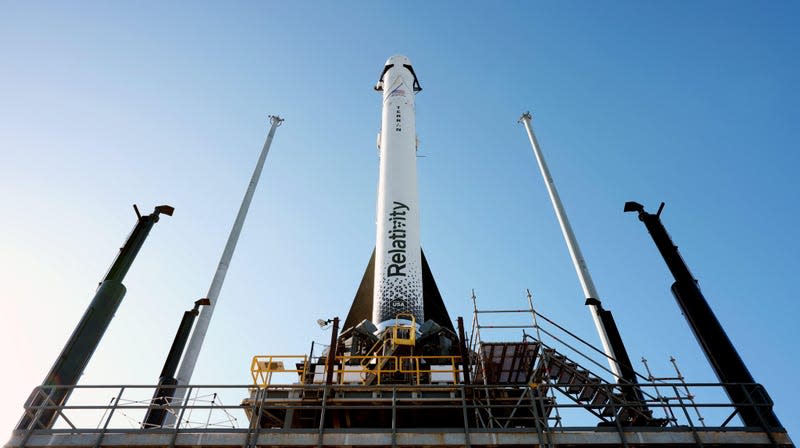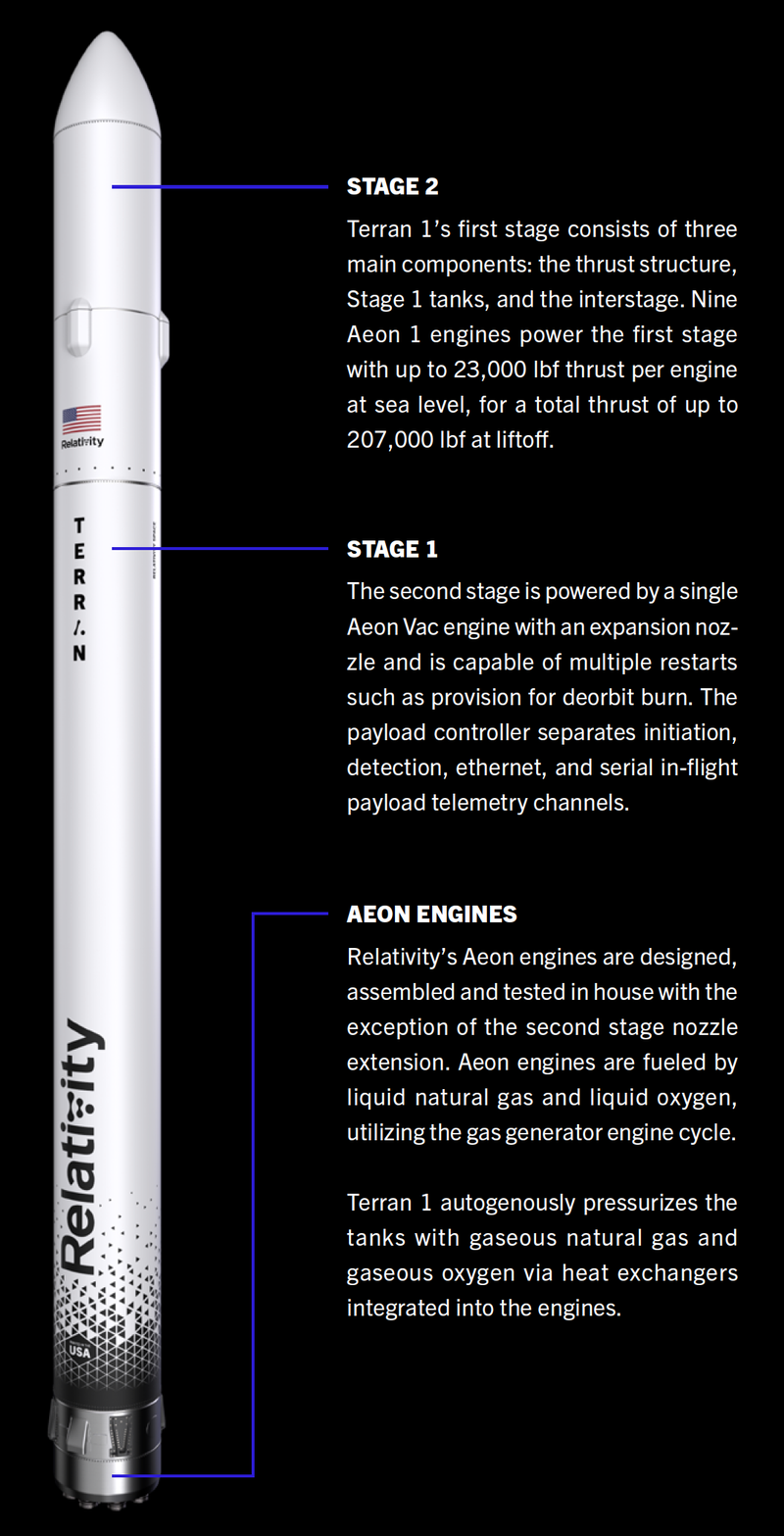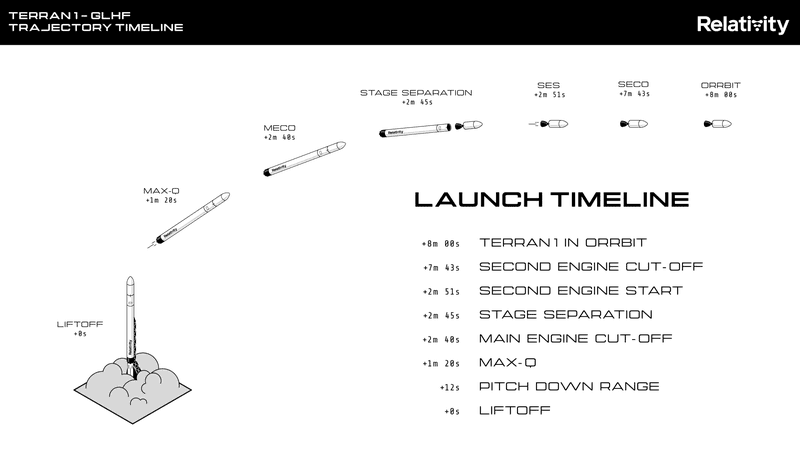Relativity Space Scrubs First Launch Attempt of 3D-Printed Rocket

Update: 3:38 p.m. ET: Relativity Space gave it a royal try today, but ultimately chose to forgo the attempt. No reason was given for today’s scrub, nor do we know when the company might try again.
Update: 3:04 p.m. ET: Relativity Space now targeting 3:45 p.m. ET for launch. An automated abort stopped the countdown due to second stage oxygen temperature being out of limits, an issue that ground teams are fixing right now.
Read more
These Winning Close-Up Photos Show Life That's Often Overlooked
Remembering Enterprise: The Test Shuttle That Never Flew to Space
Update: 1:50 p.m. ET: Launch is now anticipated for 2:40 p.m. ET as Relativity space needs some extra time for propellant conditioning, which is to ensure that the liquid methane and liquid oxygen propellants are at the correct temperatures.
Update: 1:00 p.m. ET: Relativity Space is now targeting 2:00 p.m. ET for launch. Today’s launch window closes at 4:00 p.m. ET.
Update: 12:22 p.m. ET: Relativity’s live webcast has begun, and with an updated T-0 anticipated for 1:19 p.m. ET.
Update: 12:09 p.m. ET: In a tweet published at 11:48 a.m. ET, Relativity Space said it’s “working through a new T-0 time and will share an update on the start of our live webcast programming soon.”
Original article follows.
It’s one of the most anticipated launches of the year: the inaugural flight of a 3D-printed, methane-fueled rocket. We’ve got the live webcast for you right here, in an experimental space mission you won’t want to miss.
California-based Relativity Space has named it the “Good Luck, Have Fun” mission, which seems wholly appropriate for this innovative launch. Should the 110-foot-tall (33.5-meter) Terran 1 rocket reach orbit, it will establish two milestones: the first 3D-printed rocket to reach orbit and the first methane-fueled rocket to reach orbit.
Terran 1: Launching The World’s First 3D Printed Rocket
The fully expendable two-stage rocket is slated to lift off from Launch Complex 16 in Cape Canaveral, Florida, on Wednesday, March 8 at 1:00 p.m. ET, with the launch window closing three hours later. Relativity’s live broadcast, available above, will begin at 12:00 p.m. ET.
The “Good Luck, Have Fun” mission marks Relativity’s first orbital attempt, and as a demonstration mission, Terran 1 won’t be packing a customer payload. “Hard to believe the day is nearly here to launch Terran 1, our first rocket,” Relativity Space CEO Tim Ellis tweeted on Tuesday. “7 years ago, I cofounded @relativityspace, which feels like a lifetime ago, but is an incredibly short time frame in the scheme of things in aerospace.”

The startup, which secured a launch license from the Federal Aviation Administration on February 21, chose not to perform a final static fire test on the pad, saying it wanted to avoid any unnecessary wear and tear on the rocket.
Terran 1 will be the “largest 3D printed object to attempt an orbital flight,” the company claims. The rocket is 85% 3D-printed by mass, which is undeniably impressive, but Relativity is working toward the goal of making it 95% 3D printed. The fully assembled rocket, sans fuel and payload, weighs roughly 9.3 metric tons, or 20,500 pounds, according to the Relativity press kit. To manufacture the rocket, the company uses a proprietary printing process that leverages AI and autonomous robotics.
The rocket is equipped with nine Aeon first stage engines and a single Aeon Vac second stage engine. It should be capable of lifting 1.2 metric tons (2,756 pounds) to low Earth orbit, and the company says its methalox-propelled Aeon engines have undergone over 2,000 test fires.
The rocket runs on a mixture of liquid oxygen and liquid natural gas, “which are not only the best for rocket propulsion, but also for reusability, and the easiest to eventually transition to methane on Mars,” Relativity claims. Methane, the primary component of natural gas, is considered the next-generation rocket fuel. In December 2022, China’s Zhuque-2 rocket became the first methane-fueled rocket to attempt an orbital launch; the rocket took flight but failed to reach orbit and deliver its 14-satellite payload. So if Terran 1 succeeds today and reaches orbit, it will become the first methane-fueled rocket to accomplish this feat.

That Terran 1 will survive the journey to space is no guarantee. It is an experimental rocket built from experimental additive manufacturing techniques. A key moment of the launch will be Max-Q—the moment when the rocket experiences the most intense aerodynamic stresses. Should the rocket fail and crumble to pieces, that could very well be the moment it happens (at T+ 1:20).
“Passing Max-Q would be a big inflection point,” Relativity explained in a March 6 tweet, as “passing this point in flight proves our hypothesis: 3D printed rockets are structurally viable.” Looking beyond Max-Q, the company said another “big accomplishment” would be for Terran 1 to achieve first stage separation. The company’s language is actually a bit refreshing, as it’s clearly setting reasonable expectations for its first orbital launch attempt.
Indeed, Relativity Space is boldly going where no one has gone before. Regardless of what happens today, it’s a milestone launch moment, as yet another private launch provider tries to push the envelope.
More: Japan’s New H3 Rocket Forced to Self-Destruct During Inaugural Launch
More from Gizmodo
Sign up for Gizmodo's Newsletter. For the latest news, Facebook, Twitter and Instagram.

